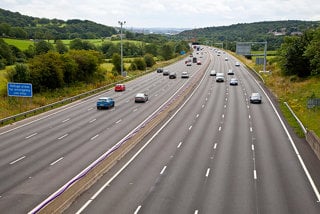The UK’s motorways will be reimagined as an extensive public transport network using self-driving electric vehicles and roadside stations in a project by Connected Places Catapult.
The vision of the organisation’s Motorway Mobility project is to use the existing motorway infrastructure together with autonomous vehicles and new transport hubs near to the motorway, to provide new or more frequent services between a different locations across the country.
This concept features a larger number of smaller vehicles which could better respond to passenger demand and reduce waiting and journey times.
It would also make new route options possible, particularly in areas that are not well served by existing public transport services.
The project, funded by Highways England and supported by vehicle manufacturer Arrival, could provide a new mode of high capacity, demand responsive public transport.
Neil Fulton, chief operating officer at Connected Places Catapult, said: “The Motorway Mobility concept can be imagined as a new rail network, for which our existing motorways are the rails and automated vehicles are the self-driving carriages.
“It enables the whole of the motorway network to be reimagined as a public transport network.
“This feasibility study will explore how frequent and convenient services of this type throughout the day and night could enable users to switch from the private car to public transport.
“This will give people back some of their free time that was spent driving, during which they could catch up on work or simply relax.
“This will also lead to reduced congestion, improved safety, reduced public transport journey times and will create new business opportunities.”
Connected Places Catapult will explore how vehicle manufacturers, autonomous control system developers, social-behavioural experts and other organisations can work together to create this new public transport mode.
It is hoped the solution will be scalable across the whole of the UK’s motorway network and beyond, in the future.





















Login to comment
Comments
No comments have been made yet.